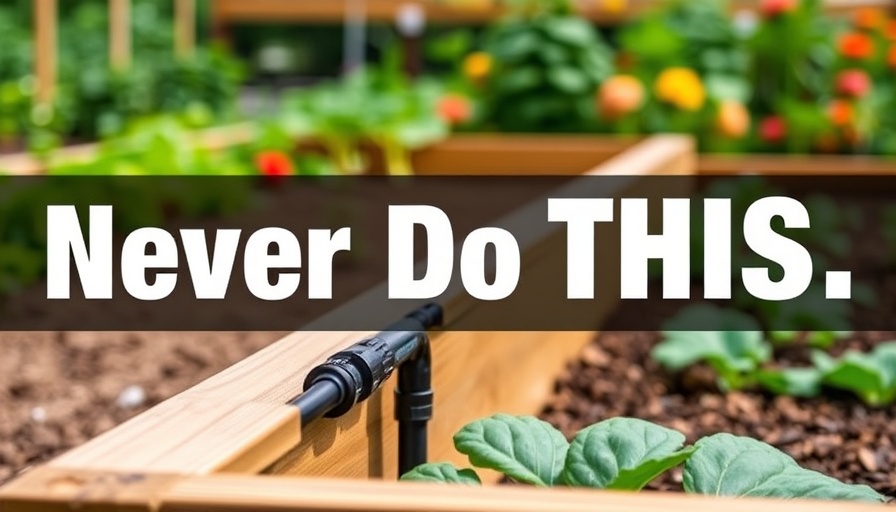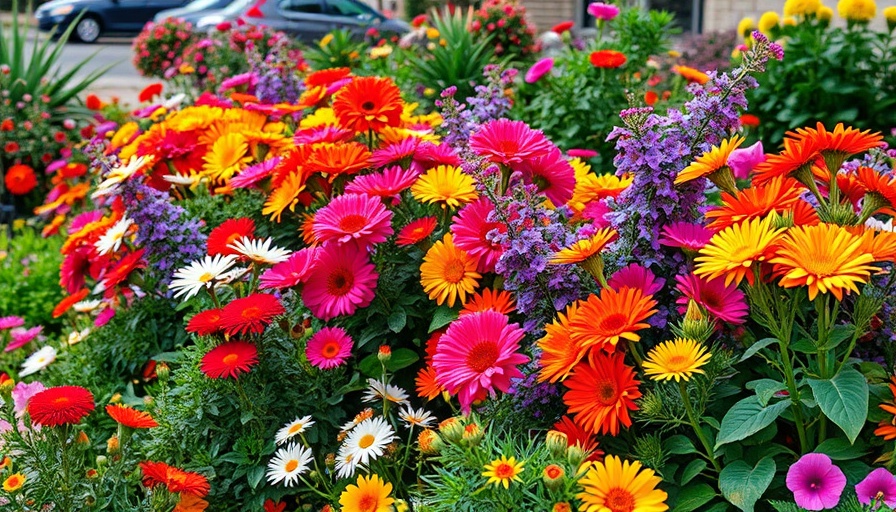
Understanding the Mystery of Quick Drying Raised Beds
Have you ever looked out at your raised beds, only to notice that they're dry despite your best efforts to keep them watered? You're not alone! Many gardeners share this frustration. Often, the problem isn’t just in the watering schedule but in how we approach the process altogether. Identifying the common mistakes can make all the difference in maintaining thriving, hydrated gardens.
Common Misconceptions About Watering Raised Beds
Let’s delve into some of the misconceptions that many novice and even seasoned gardeners have about watering their raised beds. One prevalent myth is to water less often but more deeply. While this can apply to traditional gardens, raised beds tend to dry out more quickly due to their elevated nature and surrounding air exposure. Ignoring the need for more frequent watering can lead to stressed plants.
Essential Techniques for Effective Watering
Utilizing the right watering techniques is crucial in preventing your raised beds from drying out. For instance, using a soaker hose can provide a gradual and consistent watering method that reaches down into the soil where it's needed most. Additionally, considering mulch can drastically improve moisture retention. This not only keeps your soil moist longer but also minimizes the need for frequent watering and suppresses weeds.
Why Soil Type Matters
Another significant factor contributing to quick soil drying in raised beds is the type of soil you use. Not all soil is created equal! Using a mix that retains moisture while also allowing for drainage is ideal. A combination of compost, peat moss, and garden soil can create an environment that supports the health of your plants by maintaining moisture levels.
Using Cover Crops and Cropping Techniques
Are your raised beds frequently bare? Consider integrating cover crops or companion planting as strategies to keep the soil covered. These practices not only support soil health but also buffer against evaporation. Understanding the best plants to pair can enhance your garden's health while helping to retain moisture.
Engaging with Community Gardening Resources
Don’t underestimate the power of community! Local gardening clubs or online forums can provide insights and shared experiences about watering and maintaining raised beds. Engage with these resources to discover tried-and-tested techniques that have worked for others in your community.
Plant Selection and Its Impact on Watering Needs
When designing your raised bed garden, consider the types of plants you’re including. Some plants, like succulents and herbs, are more drought-resistant while others may require more consistent watering, such as tomatoes and peppers. By strategically selecting plants that complement each other's watering needs, you can ensure better moisture retention overall.
Conclusion: Take Action for Thriving Raised Beds
In preparing your raised bed garden for the future, it’s essential to take action on these insights. Start by assessing your watering techniques, soil types, and plant combinations. Knowledge is power when it comes to gardening, so leverage these strategies to establish a garden that flourishes and holds moisture. There’s nothing more rewarding than stepping back and watching your dedicated efforts translate into vibrant flowers, juicy vegetables, and thriving herbs. Happy gardening!
 Add Row
Add Row  Add
Add 




Write A Comment